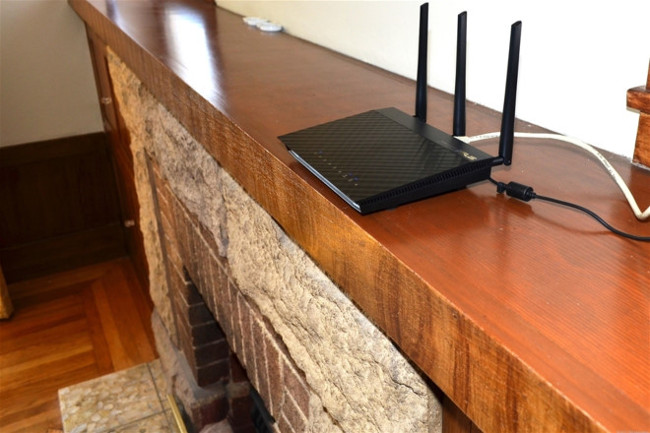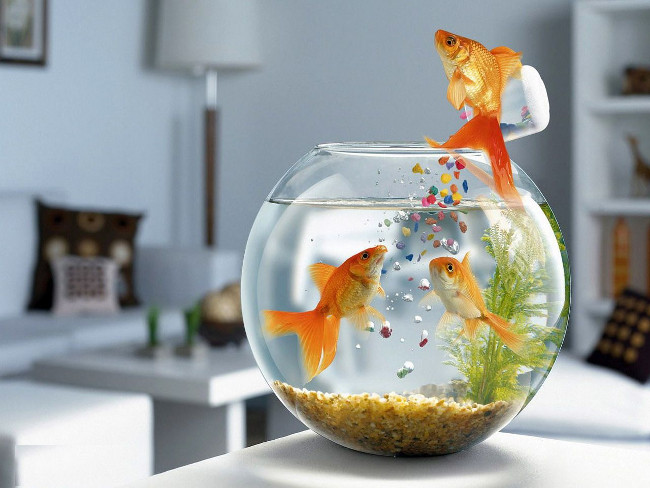Unexpected things in the house silently 'break' Wi-Fi waves
Fish tanks, decorative flashlights and many other household items affect the quality of Wi-Fi waves. What is the cause and how to fix it?
The Wi-Fi network is no longer rare in Vietnamese families. But there are many interesting things around this connection technology that most people don't know about. For example, placing a Wi-Fi router next to a fish tank or near a bonsai with a shadow decoration will weaken the broadcast capability.
How does Wi-Fi work?
Wi-Fi waves are transmitted through a modem that connects to the total network source of the Internet service provider . Routers with antennas act as connection hubs. It will transfer signals from the total network to Wi-Fi waveforms and receive signals from devices such as computers, phones .
However, users can easily realize that Wi-Fi waves are often unstable by wired networks . There are days, the signal is quite good, web access is fast without interruption. Meanwhile, there are also some days the process of downloading data seems more difficult than usual.

The cause of this phenomenon is quite diverse. It may be due to the transmission from the service provider or because the router is not allowed to rest for a long time. In addition, some of the objects in the house are also the cause of the quality of Wi-Fi transceiver of the modem is affected .
The causes of Wi-Fi interference are few expected
Decorative light flashes

According to Ofcom, the UK telecom regulator, the magnetic field emitted from the flash light can seriously affect the Wi-Fi system. The same is true for devices with wires and glowing lights. But decorative lamps used during Christmas or Tet specials are more special because the structure consists of many barbed wires wrapped together to make the magnetic field larger.
In addition, flashes decorated today also equipped with additional adjustment box to turn on and off lights according to the rhythm, creating a nice blinking effect. This is even more harmful to each family's Wi-Fi transceiver.
According to experts, flash lights can reduce Wi-Fi performance by up to 25% .
Kitchen utensils
Even kitchen appliances are a factor affecting network quality. Wi-Fi signals are easily blocked by metal plates and plumbing. Therefore, items such as refrigerators, freezers, microwaves or washing machines may interrupt the signal. In addition, the engine system and machinery in it also cause interference.
But the most worrisome is the microwave. This type of device shares the same frequency (about 2.4 GHz) with the Wi-Fi transmitter so it will temporarily disconnect when operating.
Aquarium fish tank

Water is very good at absorbing Wi-Fi waves. Therefore, leaving the router next to an indoor aquarium makes Internet quality significantly reduced. Not only water but any liquid has similar properties .
Wall
Materials such as brick, plaster, stone or metal prevent Wi-Fi from passing. Particularly large houses, thick walls will make Wi-Fi waves more difficult to operate. Therefore, among the rooms, the design of thin plaster partition wall using the router will give better quality of broadcasting.
Wi-Fi wave conflict with neighbors
Wi-Fi quality is often affected by neighbors' modems because of signal conflicts . In this case, you should change the frequency to ensure line quality. Not to mention, users who use Wi-Fi passwords are easy to guess and lead to "stealing" networks.
You should read it
- The view that 5G waves are harmful to the brain is completely wrong!
- The impact of mobile phone waves on human bodies
- How to download Wuthering Waves, Wuthering Waves APK
- How to increase the ability to catch waves for iPhone phones
- What is RF wave? Face lift with the best mini RF
- What color is the Wi-Fi wave?
- First confirmation in the world: Having a brain tumor caused by using too many mobile phones
- 6 best Wifi wave-enabled devices and Wifi wave amplifiers in 2018
- Researchers invented a method that allows playing a puzzle game through brain waves
- Why is Wi-Fi on the computer always catching better on the phone?
- AI can reconstruct images from human brain waves: Is it worrying?
- New sound waves can treat high blood pressure, migraine






 How to download Wuthering Waves, Wuthering Waves APK
How to download Wuthering Waves, Wuthering Waves APK The view that 5G waves are harmful to the brain is completely wrong!
The view that 5G waves are harmful to the brain is completely wrong! Weak WiFi waves, try doing this before you intend to replace the new Wi-Fi router set
Weak WiFi waves, try doing this before you intend to replace the new Wi-Fi router set Startled with houses built on unbelievable terrain
Startled with houses built on unbelievable terrain Health-threatening dangers are hiding right in your own home
Health-threatening dangers are hiding right in your own home How to play Co-op Wuthering Waves, Wuthering Waves co-op
How to play Co-op Wuthering Waves, Wuthering Waves co-op